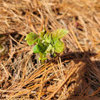Black Plastic mulch
ulasaskin
13 years ago
Featured Answer
Sort by:Oldest
Comments (15)
Dan _Staley (5b Sunset 2B AHS 7)
13 years agoRelated Professionals
River Forest Landscape Architects & Landscape Designers · Chattanooga Landscape Contractors · College Park Landscape Contractors · Damascus Landscape Contractors · Fort Payne Landscape Contractors · Kaneohe Landscape Contractors · Los Banos Landscape Contractors · Lynwood Landscape Contractors · Metairie Landscape Contractors · New Providence Landscape Contractors · Post Falls Landscape Contractors · Woodbury Landscape Contractors · Woodland Landscape Contractors · Chicago Driveway Installation & Maintenance · Raynham Driveway Installation & Maintenanceluke_oh
13 years agodigdirt2
13 years agoluke_oh
13 years agoBelgianpup
13 years agodigdirt2
13 years agoluke_oh
13 years agofusion_power
13 years agoadrock430
13 years agohappyhelper
13 years agovegangirl
13 years agofgabrams1959
9 years agoseysonn
9 years agograndad_2003
9 years ago
Related Stories

GARDENING GUIDESHow to Pick a Mulch — and Why Your Soil Wants It
There's more to topdressing than shredded wood. Learn about mulch types, costs and design considerations here
Full Story
GARDENING GUIDESThe Art of Green Mulch
You can design a natural garden that doesn’t rely on covering your soil with wood and bark mulch
Full Story
GARDENING AND LANDSCAPINGChoosing a Deck: Plastic or Wood?
Get the pros and cons of wood, plastic, composite and more decking materials, plus a basic price comparison
Full Story
KITCHEN COUNTERTOPSKitchen Counters: Plastic Laminate Offers Options Aplenty
Whatever color or pattern your heart desires, this popular countertop material probably comes in it
Full Story
GARDENING GUIDESNew Ways to Think About All That Mulch in the Garden
Before you go making a mountain out of a mulch hill, learn the facts about what your plants and soil really want
Full Story
GARDENING GUIDESGarden Myths to Debunk as You Dig This Fall and Rest Over Winter
Termites hate wood mulch, don’t amend soil for trees, avoid gravel in planters — and more nuggets of garden wisdom
Full Story
COLOR11 Reasons to Paint Your Ceiling Black
Mask flaws, trick the eye, create drama ... a black ceiling solves a host of design dilemmas while looking smashing
Full Story
FLOORSDrama’s Afoot With Striking Black Floors
Be bold. Be brave. Drench your floors in black for a memorable interior scene
Full Story
BLACKHow to Decorate With Brown, Black — or Both
Black is best for engineered materials; brown works great for textures — and more designer tips for working with these two classic colors
Full Story







Belgianpup